SEO is all about enhancing website visibility in search engine results, which is, of course, a critical factor for drawing in traffic. Yet, many people are still making common SEO mistakes that hamper their path to effective online optimization.
This article delves into seven critical SEO mistakes that can adversely affect your website’s visibility and ranking on search engines. More importantly, we’ll provides practical solutions to fix or avoid these common errors.
So whether you’re a seasoned SEO professional or just starting out, this guide will arm you with the knowledge to optimize your website effectively, steer clear of common pitfalls, and climb the search engine rankings.
TABLE OF CONTENTS:
Help Me Boost My Ranking & Traffic
SEO Mistake #1: Not Understanding Your Audience’s Search Intent
The first cardinal sin of SEO is failing to comprehend your target audience and their search intentions. This mistake can lead to misaligned content strategies, rendering your efforts ineffective and diminishing your website’s ability to engage and convert visitors.
Why is search intent so important?
Search intent refers to the purpose behind a search query. It’s what the user hopes to find when they type words into a search engine. There are generally four types of search intents:
- informational (seeking information)
- navigational (looking for a specific website or page)
- commercial investigation (comparing products or services before a purchase)
- transactional (ready to buy or engage in a specific activity)
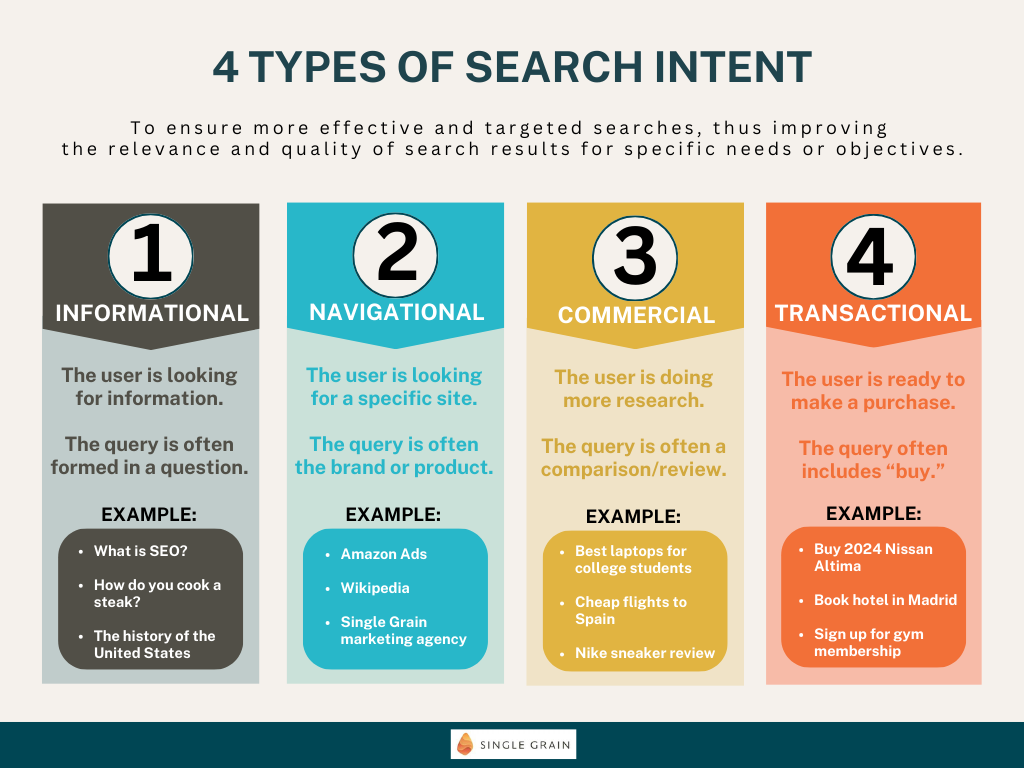
Failing to understand and cater to these intents can result in content that misses the mark.
For instance, if most of your audience is looking for detailed guides (informational intent), but your content is heavily sales-oriented (transactional intent), your audience is less likely to engage with your site.
How to Fix or Avoid This
The solution lies in thorough audience research. Start by developing detailed buyer personas:

These are semi-fictional representations of your ideal customers based on real data and educated speculation about customer demographics, behavior patterns, motivations and goals.
Once you have a clear picture of who your audience is, use tools like Google Analytics, Semrush or Ahrefs to analyze the types of queries leading users to your site. This insight helps in understanding their search intent.
Also, regularly review search engine results pages for your targeted keywords to understand what type of content ranks well and aligns with user intent.
Next, tailor your content to meet these needs. If your audience prefers in-depth information, focus on comprehensive blog posts or guides. If they’re comparison shoppers, create comparison charts or reviews. Aligning your content with user intent not only boosts engagement but also increases the likelihood of conversions.
Remember: Audience preferences and search engine algorithms change over time, so it’s crucial to regularly reassess your audience and their search intent. Keep abreast of changes in market trends, and periodically review your buyer personas to ensure they still represent your actual audience.
SEO Mistake #2: Overlooking Keyword Research
Another common yet significant error in SEO is neglecting comprehensive keyword research. This oversight can lead to using keywords that don’t align with your audience’s needs or are too competitive to rank for effectively.
Why do you need to do comprehensive keyword research?
Keyword research is the process of finding words and phrases that people use in search engines, which are related to your business or content. The right keywords can attract your target audience and increase your content’s visibility. Conversely, the wrong keywords can render your content invisible or irrelevant to your audience’s needs.
The risks of overlooking keyword research include missing out on valuable traffic, targeting keywords with low search volumes, or competing for highly competitive keywords without the necessary resources. This can lead to poor website performance and a lower return on investment for your SEO efforts.
How to Fix or Avoid This
The fix starts with investing time and resources into thorough keyword research. Use tools like Google’s Keyword Planner, Semrush or Ahrefs to find relevant keywords with a balance of high search volume and achievable competition levels.
When conducting keyword research, consider long-tail keywords. These are longer and more specific keyword phrases that visitors are more likely to use when they’re closer to a point-of-purchase or when they’re using voice search. They’re often less competitive but can have a higher conversion rate because they’re more specific.
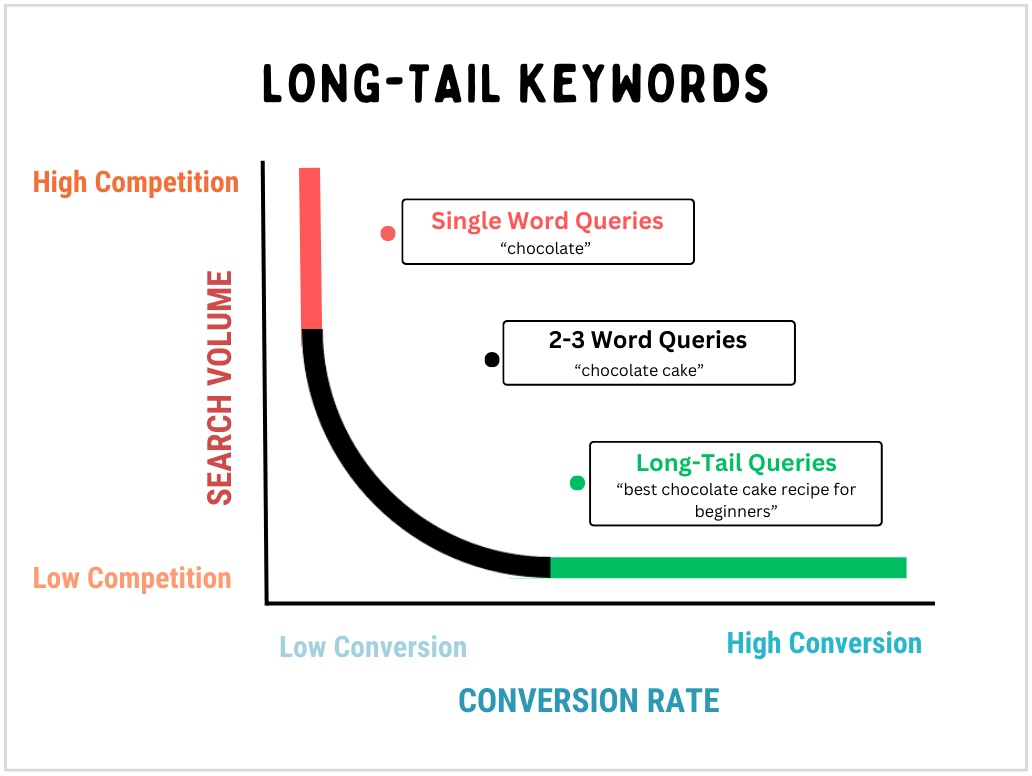
Also, analyze your competitors’ keyword strategies to identify gaps and opportunities. Look for keywords they rank for that you don’t and assess whether these could be valuable for your content.
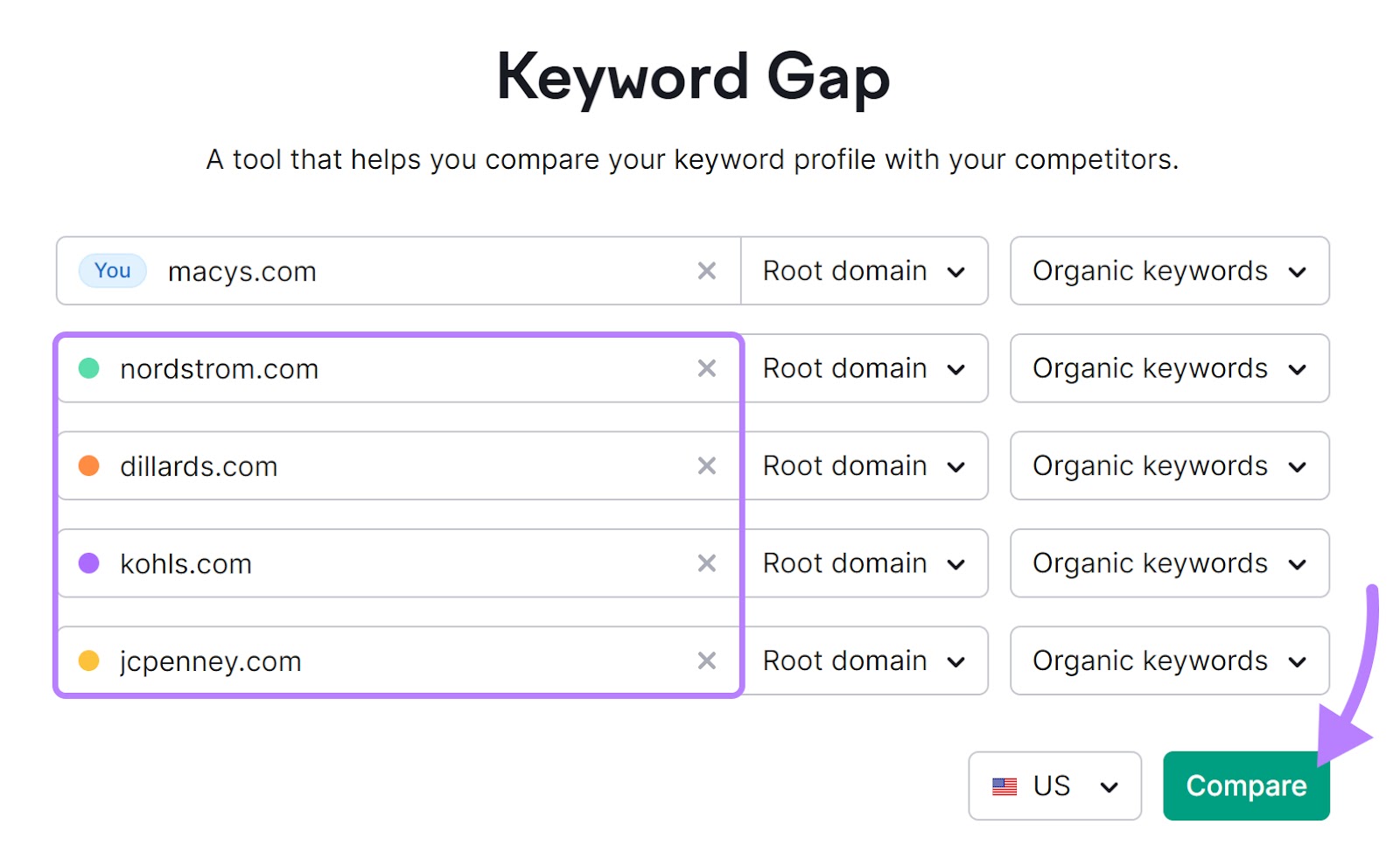
Remember: Regularly update your keyword research. Search trends can change rapidly, and staying current ensures your content remains relevant and visible.
SEO Mistake #3: Neglecting Quality Content
Another significant blunder in SEO is the neglect of quality content. Quality content is the cornerstone of SEO and is crucial for engaging and retaining your audience.
What is the significance of creating high-quality, engaging content?
The content on your website should provide value to your readers. Quality content is informative, engaging and aligned with your audience’s interests and needs. It should solve a problem, answer a question or provide insights that are relevant to your target audience.
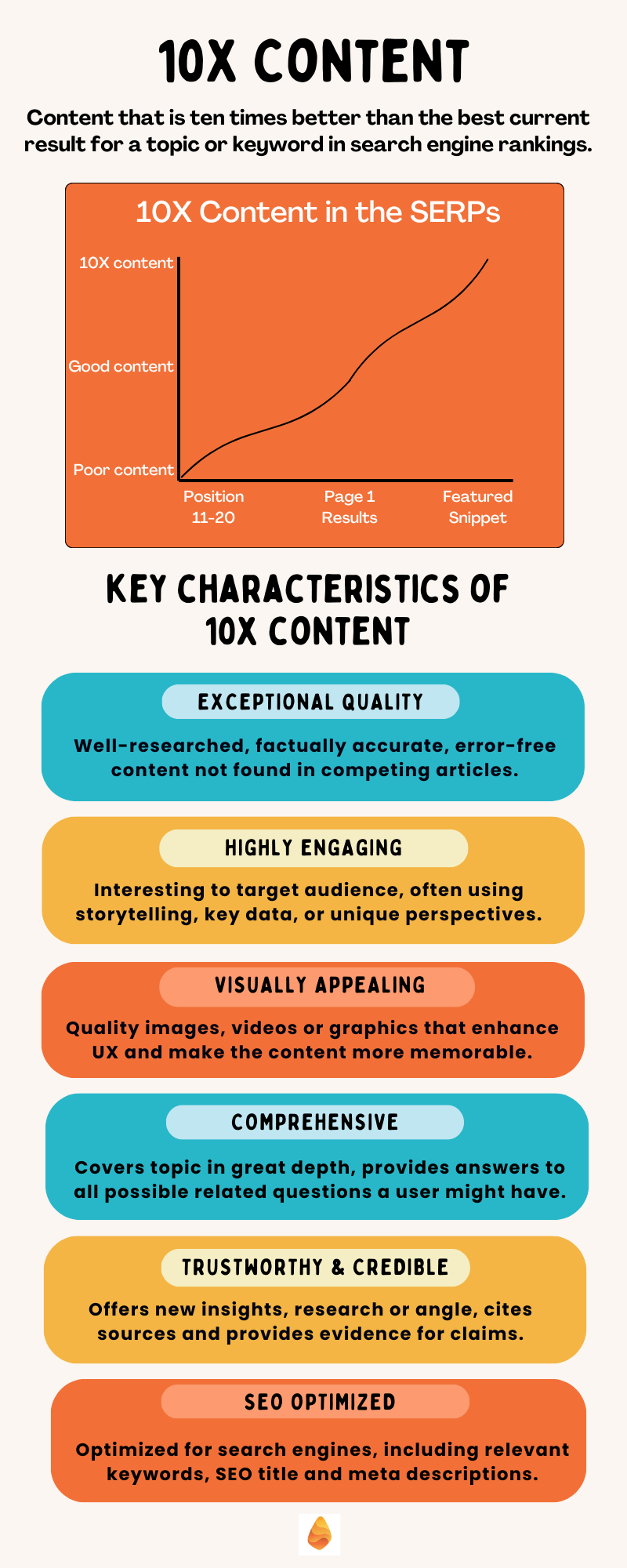
Neglecting to create high-quality content can result in high bounce rates, low user engagement and poor search engine rankings. Quality content is also essential for building trust and authority in your niche.
How to Fix or Avoid This
The solution lies in creating content that is both informative and engaging. Start by understanding your audience’s needs and interests (#1 above). Use your audience research to identify topics that will resonate with them.
Your content should be well-researched, well-written and free of grammatical errors. It should also include elements that enhance readability, like subheadings, bullet points and images.
Incorporate multimedia elements like videos (see what we did?👇), infographics and podcasts to make your content more engaging.
Also, update your content regularly to keep it fresh and relevant.
Lastly, encourage user interaction by including calls to action (CTAs) and opportunities for readers to comment or share your content.
Just want someone to do all the hard work for you? Single Grain’s SEO experts can help!👇
Help Me Boost My Ranking & Traffic
SEO Mistake #4: Overusing Keywords
Overusing keywords, commonly known as keyword stuffing, is a detrimental SEO strategy that can harm your website’s ranking.
What’s wrong with using a lot of keywords?
Keyword stuffing involves overloading web content with the same target keywords in an attempt to manipulate a site’s ranking in Google search results. This practice not only degrades the quality of your content, but also can lead to penalties from search engines.
Search engines, like Google, are designed to provide the best user experience, favoring content that is relevant, informative and human-friendly. Overusing keywords makes content unreadable and unhelpful, which is counterproductive to these goals.
How to Fix or Avoid This
To avoid keyword stuffing, focus on creating content that naturally incorporates keywords. Your primary goal should be to inform and engage your audience, not to overly optimize for search engines.
Use synonyms and related terms to diversify your language. This approach, known as LSI (Latent Semantic Indexing), helps search engines understand the context of your content without the need for repetitive keywords.
Also, be mindful of your keyword density. There’s no hard and fast rule for the perfect keyword density, but your keywords should not detract from the readability and quality of your content.
Instead of chasing a specific keyword density, consider this:
- Natural keyword usage: Use your target keyword (and related terms) naturally and organically within your content. Focus on writing engaging and informative content that your audience will find valuable.
- Topic relevance: Write content that comprehensively covers the topic associated with your chosen keywords.
- Semantic search: Google understands broader context and related concepts, so using synonyms and semantically similar terms can actually be beneficial.
- Targeting user intent: Understand what users are searching for when using your keywords and aim to answer their questions or fulfill their needs directly.
Remember: Regularly review and update your content to ensure it remains relevant and well-optimized. This includes adjusting keyword usage based on current best practices.
SEO Mistake #5: Ineffective Use of Backlinks
Backlinks are a critical component of SEO, but mismanaging them can be detrimental to your site’s performance.
What’s the tie between backlinks and SEO?
Backlinks, links from other websites to your own, are a key ranking factor for search engines:

They signal to search engines that other websites consider your content valuable enough to link to. However, not all backlinks are beneficial. Low-quality or spammy backlinks can harm your site’s credibility and rankings.
Common backlink mistakes include focusing solely on quantity over quality, buying backlinks, or acquiring them from irrelevant or low-authority sites.
How Low-Quality Backlinks to a Portal Game Walkthrough Backfired
I remember one scenario where I was trying to take advantage of new games that were coming out. When a new game comes out, people are going to search for walkthroughs, they’re going to look for guides, they’re going to look for cheat codes. We made a site called Portal 2 Walkthrough for a game called Portal, which was really fun.
We wrote some content, went on Textbroker, and paid maybe $50 per article. After writing about 10 articles, we just started building low-quality links to this site. Before you know it, we went from a site that had zero traffic to thousands and thousands of visitors. I think we got up to 11,000 a day, which is massive traffic for a site that’s brand new. We felt like we hit the jackpot.
Within a week or so, all that traffic became virtually zero; we lost everything. That’s because Google’s algorithms are very, very good at detecting when you’re doing something shady. So, what I would say here is you want to test everything so you know exactly what you can and can’t do.
This quick win from aggressive link-building tactics quickly turned into a long-term penalty once low-quality links began hurting our organic rankings.
How to Fix or Avoid This
The fix starts with focusing on earning high-quality backlinks from reputable and relevant websites:

This can be achieved through creating valuable content that naturally attracts backlinks, guest blogging on reputable sites, and engaging in legitimate link-building strategies.
Regularly monitor your backlink profile using tools like Google Search Console, Ahrefs or Semrush. Look out for and disavow any harmful or spammy backlinks.
Also, build relationships with other websites and influencers in your niche. Networking can lead to natural, high-quality backlink opportunities.
Remember: Avoid shortcuts like buying backlinks or participating in link schemes. These practices can lead to penalties from search engines.
SEO Mistake #6: Ignoring Mobile Optimization
Everyone uses a smartphone these days. That’s why ignoring mobile optimization is a significant SEO mistake that can negatively impact your website’s performance.
What’s so important about mobile-friendly websites?
More and more people are accessing the internet via mobile devices than ever before. So websites that aren’t optimized for mobile can suffer from poor user experience (if you’ve ever tried navigating an unoptimized website, you’ll know how frustrating it can be trying to tap a tiny little button with your suddenly huge fingers). And an unhappy site visitor will not return to your website – they’ll check out your competitors instead.
Mobile optimization involves ensuring that your website is responsive, meaning it adjusts smoothly to different screen sizes and resolutions:

It also includes optimizing loading times, as mobile users often have less patience for slow-loading websites.
How to Fix or Avoid This
To make sure your website is mobile-friendly, start by using responsive design. This approach allows your site to adapt its layout to various screen sizes, providing an optimal experience for all users.
Use tools like Google’s or Bing’s Mobile-Friendly Test to check how well your website performs on mobile devices:
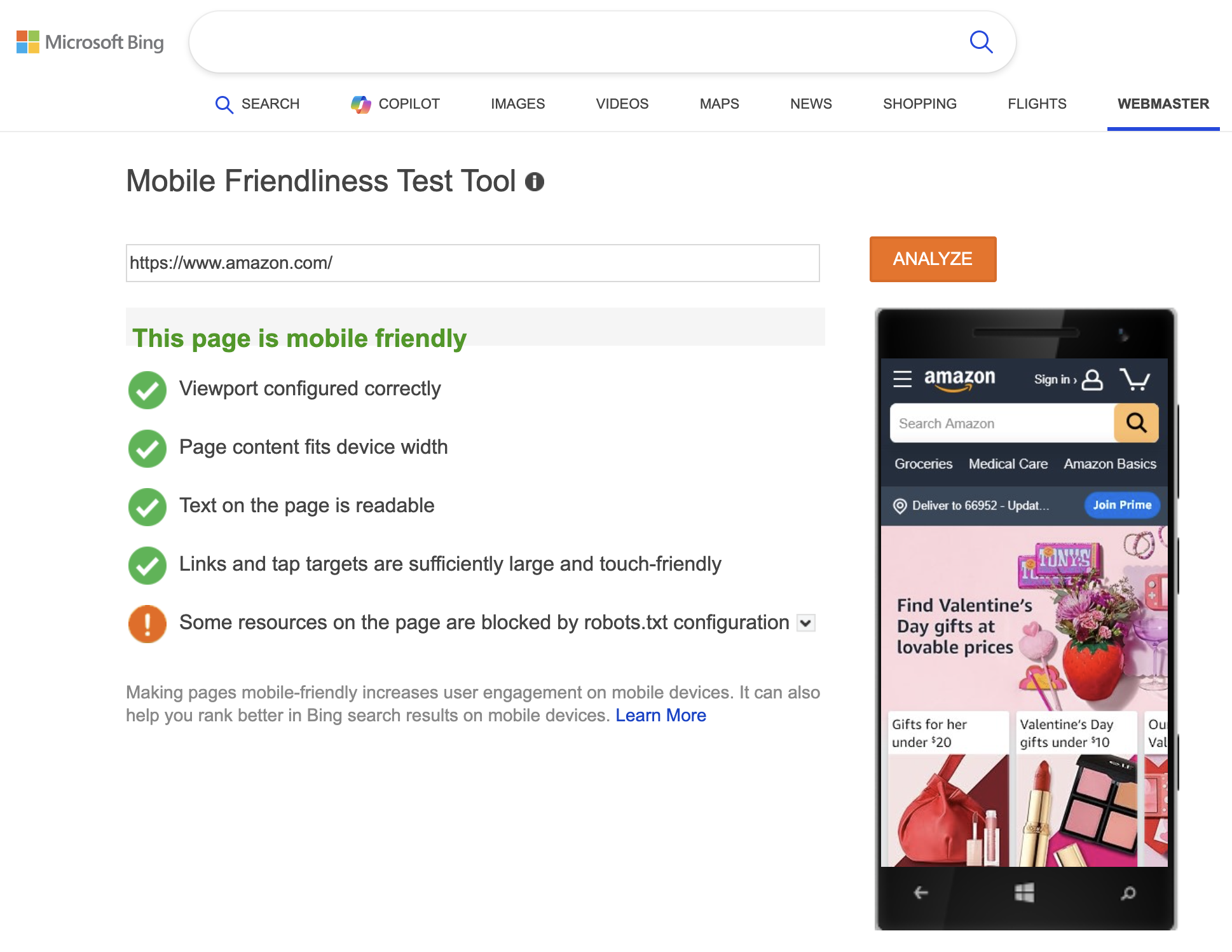
This tool also identifies specific mobile usability issues, such as text that’s too small to read, the use of incompatible plugins, and more.
Improve your website’s loading speed by optimizing images, leveraging browser caching, and minimizing the use of heavy scripts. Also, consider the user’s mobile experience in your design choices: Use large, easy-to-click buttons and be sure that your content is easily readable on smaller screens.
Remember: Regular testing and updates are essential to maintain mobile-friendliness, especially as new devices and screen sizes become available.
SEO Mistake #7: Overlooking Technical SEO
Overlooking the technical aspects of SEO is a common mistake that can significantly hinder a website’s performance in search rankings.
Why should I care about technical SEO?
Technical SEO refers to the process of optimizing your website’s technical aspects to help search engines crawl and index your site more effectively. Key elements include:
- site speed
- URL structure
- sitemaps
- mobile-friendliness
Neglecting these elements can lead to poor user experience, difficulty in indexing your site, and ultimately lower search rankings.
For example, a slow-loading website can increase bounce rates, while a poorly structured URL can confuse search engines and users alike.
How to Fix or Avoid This
To enhance your website’s technical SEO, start by using tools like Google PageSpeed Insights to identify areas for improvement, which include:
- improving site speed
- optimizing images
- enabling compression
- leveraging browser caching
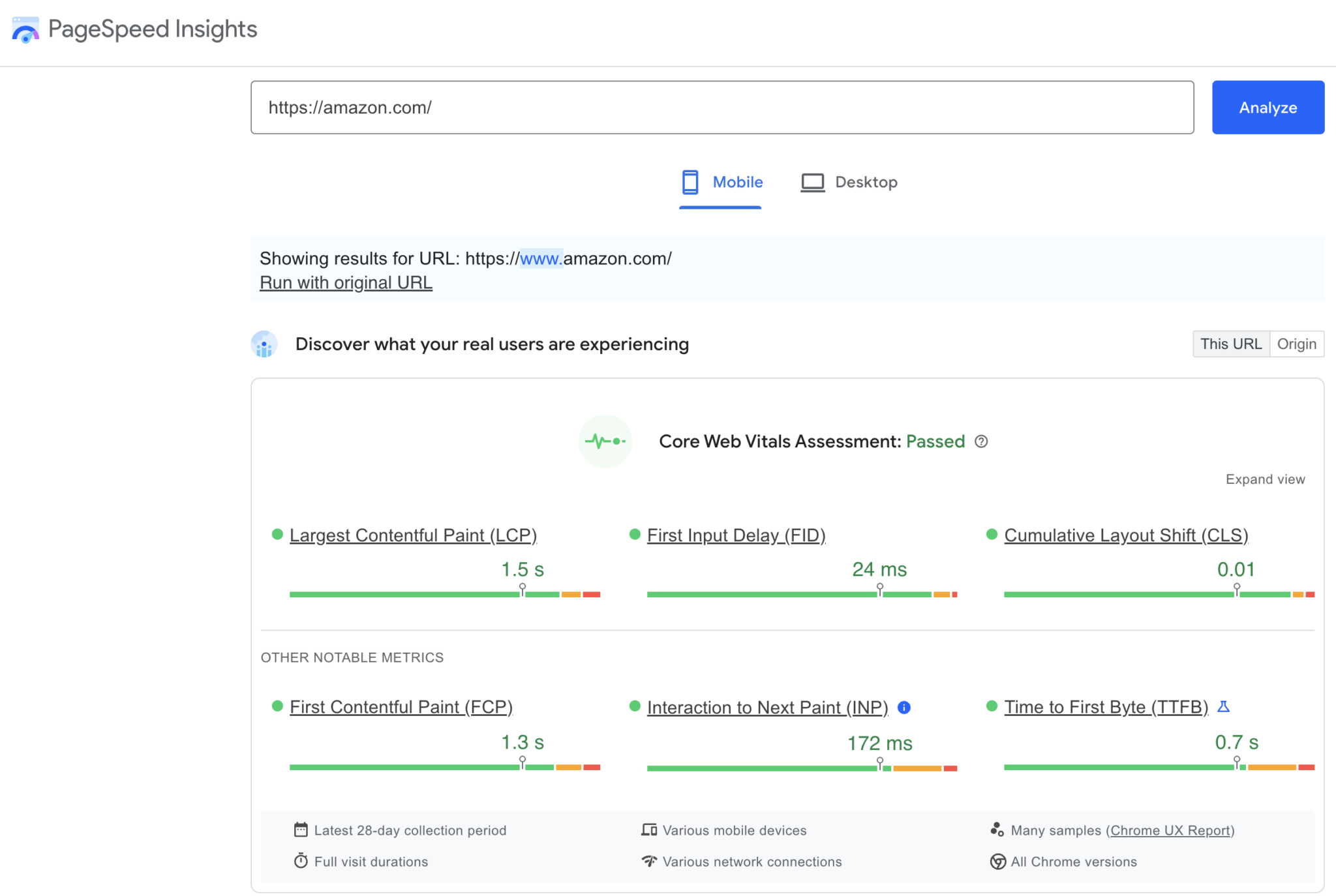
Make sure your site’s URL structure is clean and descriptive. URLs should be easy to read and understand, both for users and search engines.
Clean and Descriptive URL:
![]()
This URL is clear and straightforward. It likely leads to a page about mystery novels within the fiction genre on a bookstore website.
Non-Descriptive URL:
![]()
This URL uses query parameters (?id=123&cat=56) which doesn’t tell the user or a search engine what the content of the page is about. It’s unclear without additional context.
Create an XML sitemap and submit it to search engines:
XML stands for “Extensible Markup Language,” which is a text file used to detail all URLs on a website. This helps search engines discover and index all of your site’s important pages. Also, as mentioned earlier, make sure your website is mobile-friendly, as this is a crucial ranking factor.
Lastly, make sure your site is secure by using HTTPS. This not only protects your users’ data but also positively impacts your search rankings.
Remember: Regularly check for crawl errors using tools like Google Search Console. Fixing these errors can improve your site’s indexing and visibility.
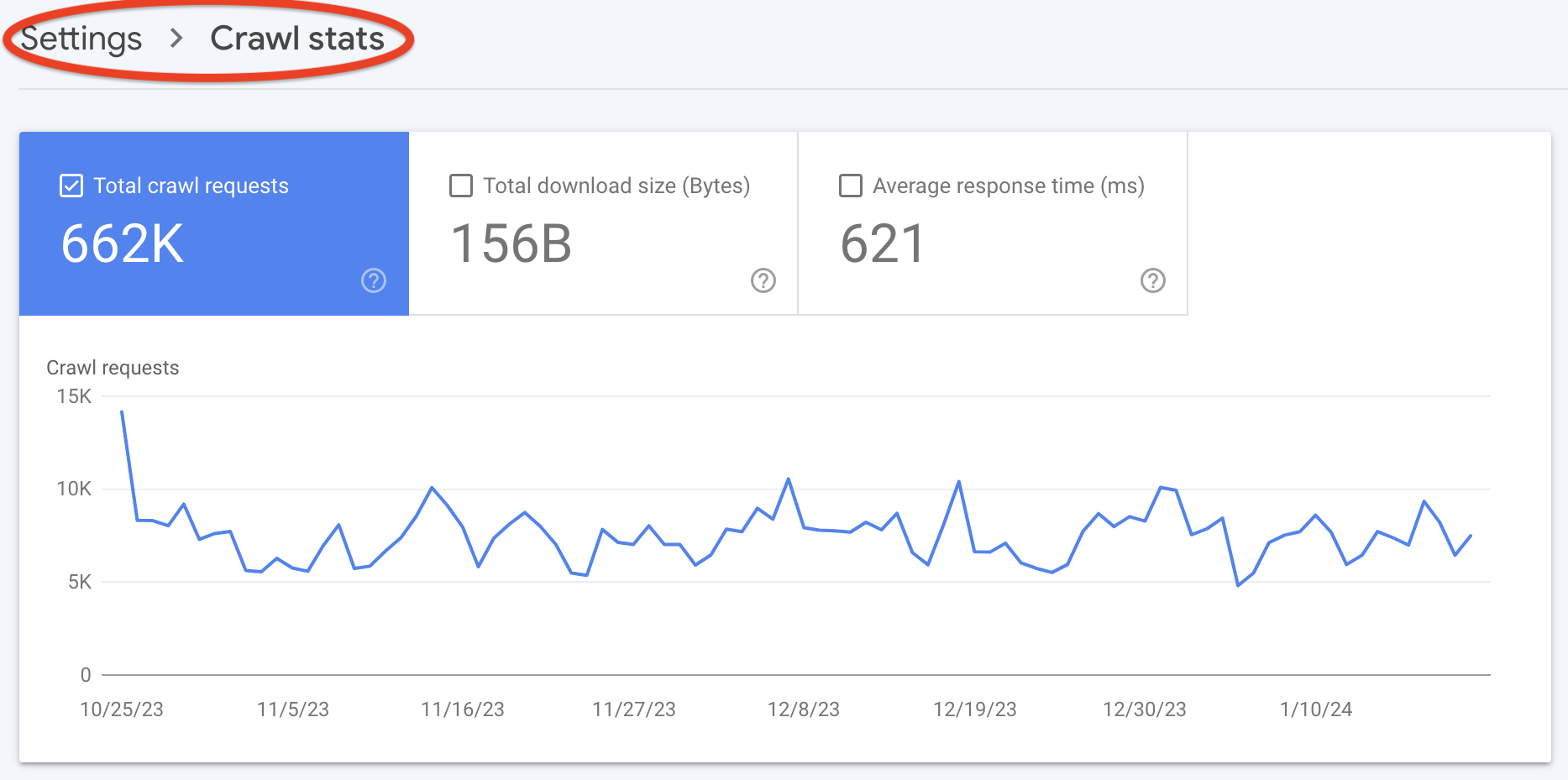
Last Word on SEO Mistakes
Here’s a quick summary of the SEO mistakes discussed here:
- Mistake #1: Not Understanding Search Intent
- Mistake #2: Overlooking Keyword Research
- Mistake #3: Neglecting Quality Content
- Mistake #4: Overusing Keywords
- Mistake #5: Ineffective Use of Backlinks
- Mistake #6: Ignoring Mobile Optimization
- Mistake #7: Overlooking Technical SEO
Each of the mistakes listed in this article can have a significant impact on your website’s search engine rankings and, by extension, its overall visibility and success.
However, with each mistake, we’ve also provided actionable strategies to either fix or avoid them. By understanding your audience, conducting thorough keyword research, focusing on quality content, balancing keyword usage, effectively managing backlinks, optimizing for mobile, and paying attention to technical SEO, you can significantly improve your site’s performance.
One last thing: Keep in mind that SEO is not a one-time task – it’s an ongoing process. Regularly reviewing and updating your SEO strategies in line with changing algorithms and user behaviors is important to enhance your website’s visibility, attract more traffic, and achieve your online goals.
If you’re ready to drive measurable increases in organic traffic with strategic optimization, Single Grain’s SEO experts can help!👇







